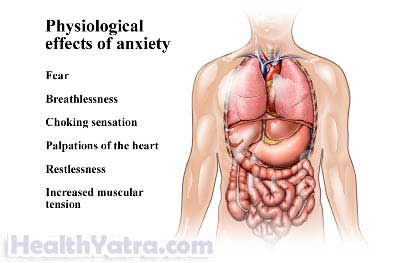Definition
Claustrophobia, an intense fear of confined spaces, can be a debilitating condition that affects numerous individuals worldwide. Whether it’s elevators, small rooms, or crowded places, those dealing with claustrophobia often experience heightened anxiety and panic attacks. In this article, we’ll delve into what claustrophobia is, its causes, symptoms, and most importantly, effective strategies to overcome this fear and regain control of your life.
Understanding Claustrophobia:
Claustrophobia is more than just feeling uncomfortable in tight spaces; it’s a psychological condition that triggers intense fear when exposed to confined environments. This fear often stems from a perceived lack of control or the belief that escape might be difficult in these situations.
Causes
Like all phobias, the cause of claustrophobia is not well known. It can run in families. The signs of claustrophobia usually develop early in life during childhood or the teenage years. Claustrophobia can disappear in adulthood. If it does not, treatment is usually necessary to overcome the fear. It may limit work or social activities or tasks of daily living.
Risk Factors
Risk factors that increase your chance of developing claustrophobia or a claustrophobic anxiety attack include:
- A history of anxiety or nervousness when in an enclosed room or space
- Continually avoiding situations that have brought on a previous anxiety attack; repeated avoidance may actually increase the chance of a claustrophobic attack and its severity.
Recognizing Symptoms:
Symptoms of claustrophobia can vary from mild unease to severe panic attacks. Common signs include rapid heartbeat, shortness of breath, sweating, trembling, dizziness, and a strong urge to escape the situation. Identifying these symptoms is the first step toward addressing the issue.

Symptoms
Symptoms may include those typical of a panic attack:
- Sweating
- Rapid heart beat
- Shortness of breath or hyperventilation
- Trembling
- Light-headedness or fainting
- Nausea
- Feelings of dread, terror, panic
Other signs of claustrophobia include:
- Automatically and compulsively looking for exits when in a room or feeling fearful if doors are shut
- Avoiding elevators, riding in subways or airplanes, or cars in heavy traffic
- Standing near exits in crowded social situations
Diagnosis
Your doctor will ask about your symptoms and medical history. A physical exam will be done. You may be referred to a psychologist, psychiatrist, or other trained mental health provider.
Treatment
Talk with your doctor or mental health provider about the best treatment plan for you. Options include the following:
Psychotherapy
The most common type of treatment for claustrophobia involves mental health counseling targeted to overcoming the fear and managing triggering situations.
Different types of strategies include:
- Relaxation and visualization techniques designed to calm the fear when in a claustrophobic environment
- Cognitive-behavioral therapy (CBT) —an approach that involves learning to control the thoughts that occur when confronted with the fear-inducing situation in order to change the reaction
Medication
Your doctor may prescribe drugs to control the panic and physical symptoms of claustrophobia. These include antidepressants and antianxiety agents. They will not cure the condition but are often helpful when used with psychotherapy.
Strategies for Overcoming Claustrophobia:
- Gradual Exposure Therapy: Gradual exposure therapy involves exposing oneself to progressively more confined spaces in a controlled and safe environment. This helps desensitize the fear response over time.
- Relaxation Techniques: Practicing relaxation techniques such as deep breathing, meditation, and mindfulness can help manage anxiety when facing triggering situations.
- Cognitive-Behavioral Therapy (CBT): CBT is an effective therapeutic approach that helps individuals reframe their negative thought patterns related to confined spaces. It teaches coping strategies and promotes healthier responses to triggers.
- Virtual Reality Exposure: Virtual reality simulations provide a safe way to experience confined spaces and gradually reduce fear responses. This technology is being increasingly used in therapeutic settings.
- Medication: In some cases, healthcare professionals may prescribe anti-anxiety medications to manage severe symptoms. These should be used in conjunction with therapy for the best results.
- Support System: Having a strong support system of friends and family who understand your struggle can provide much-needed emotional assistance during challenging times.
- Lifestyle Changes: Engaging in regular physical activity, maintaining a healthy diet, and getting adequate sleep can positively impact overall mental well-being and help manage anxiety.
Conclusion:
Claustrophobia doesn’t have to control your life. With the right strategies and support, you can gradually overcome your fear and regain a sense of empowerment. Whether it’s through exposure therapy, relaxation techniques, or professional guidance, taking steps toward managing your claustrophobia can lead to a more fulfilling and anxiety-free life. Remember, seeking help is a sign of strength, and you have the ability to conquer your fear and thrive.

